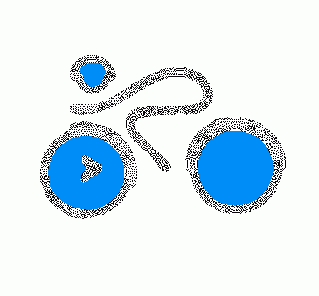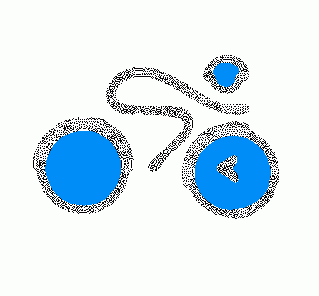| Newsletter - 2016 Archive |
 |
Cycling Club |
 |
| Newsletter - 2016 Archive |
 |
Cycling Club |
 |
Next--->
|
Marysville 600 - A Volunteer's Perspective The BC Randonneurs Club is 37 years old. There are a few riders in the club who have been riding brevets for over 30 years. This 600 saw seven of our most highly esteemed anciennes riding: Bonner, Arscott, Fergusson, Kuchenmuller, Himschoot, Chase and Stary, which if you combine their mileage and time riding brevets totals an astounding 785,000 km, with ~5 years in the saddle, and collecting 171 Super Randonneur awards!! That is a lot of randonneuring experience. The stories they could tell... Equally precious on this ride were the two rookies, one a woman (there are just 38 women who have become Super Randonneurs in all 37 years, compared to 190 men)! As an observer to this 600, I had only brief glimpses into the dramas that unfolded over the weekend. As the club ACP correspondent I have handled every control card since 1998, knowing that each one represents an amazing journey.Riding 600 km in 40 hours or less requires planning and preparation. Both you and your machine must be able to make it to the finish, mostly unsupported, travelling day and night, in all weather conditions. A lot can happen in 600 km. This ride had one supported control. Interestingly, I would say that the two rookies were as prepared as anyone out there, so hopefully their brevets were good experiences and they will enjoy future brevets. Although there are 600 km of scenic and relatively low traffic roads in south-western BC, Nigel decided that routing the spring 600 south over the border might be safer than taking the spectacular Fraser Canyon, as he has organized the lower mainland spring 600 for several years and has had good and bad experiences on BC routes. He pre-rode the Marysville route the weekend before the event, and despite wet conditions on the first day, he enjoyed himself and thought that most folks should like (most of) the route. The photos of the start showed riders gliding off into the early morning peacefulness, looking strong and confident. I met up with everyone at Derby reach, 41 km into their adventure, when the morning was still fresh and young. Already the adventure was unfolding for three riders, having repaired a broken chain or punctured tires. Derby Reach is an idyllic setting, but brevet riders have to keep moving, so they carried on through the agricultural landscape of the Fraser Valley (hopefully already drinking lots and consuming their preferred nutritional supplies). Crossing the border, riders headed for Mt. Baker, first climbing the infamous Reese Hill with an average ~10% grade for a km, then winding past Silver Lake to Maple Falls, where instead of heading up the mountain, they turned south, via another winding backroad through the Mosquito Lake area. Sticking to back roads, they then rode along the South Skagit highway, which offered some protection from sun and wind with the tree cover, next to the mighty Skagit River, up to Concrete, then back into the wilderness of Concrete Sauk Valley road to the #530 connector up to Darrington, where Ken registered 50 degrees on his computer while he was inside the food store inhaling ice cream. It was definitely heating up out there. The weekend weather was hot. Riders must adjust their pace and ensure they have enough rest stops to recover from the heat stress. Nobody ended up in the hospital on an IV, although there were challenges for some with riding with nausea, with their fellow randonneurs ensuring that they ingest salt tablets and fluids, and seek shade but keep moving to get home. With unsupported rides, there are limited opportunities for quitting, so riders can suffer more, knowing that they have to get home somehow. Each rider must make the decision to continue or not, determining whether completion of the brevet is worth the physiological stress. In an unsupported ride, there aren't volunteers to assess rider states to help make that decision, so this responsibility lies with the riders themselves. Planning requires riders to predict their pace and consider where and when they will take breaks for rest, replenishment and recovery (mental and physical). I personally think some riders underestimate the importance of planning for logistical challenges and ensure they will have opportunities for rest and recovery. Sleep deprivation can have serious consequences and should be minimized or at least recognized as a significant challenge to be managed intelligently. Sleeping in ditches when the temperature is dropping below freezing is no joke. When riders do not prepare and plan adequately, the organizer and volunteers may have to deal with additional pressures. Prepare for the worst, hope for the best. Time spent preparing and planning varies, but I think I can safely say that more is better. Ensuring that both you and your steed are set up to succeed with a minimum of effort is the key to completing longer distances with the least discomfort. Randonneuring by definition places a significant amount of wear and tear on both you and your bike. Recovery and bike maintenance are critical. As Nigel anticipated, the motel at the overnight control was fully booked so a few riders who had not reserved a room and who needed sleep ended up sleeping in the car and in the control room. Although sleeping anywhere makes a great story, the club must demonstrate a certain level of respect for those who provide service for riders, and riders are encouraged to support these businesses. Two riders continued through the night, taking advantage of the cooler but not too cool (except in the low-lying fog) nighttime temperatures. The Marysville control closed around 7:30 am, so all were back on the road early Sunday morning for another warm day. The return leg included Chuckanut Drive, which one might expect on a route designed by Nigel. All the riders continuing for the last 220 km on Sunday made it home before the finish control closed at 10 pm. There were three who abandoned the ride on Saturday, one due to an overuse injury, one due to a badly worn tire (and possibly not fully recovered from an injury?) and another which may have been avoided by having more miles in the legs. There were one or two riders who probably struggled with not fully recovered injuries but managed to finish.Traffic wasn't bad for most of the route, but the brevet finished taking highway #15 north from the border then into Vancouver along the Lougheed Highway, both with good shoulders, but on a busy Sunday afternoon. A rider was hit by an oblivious senior driver and suffered a broken collarbone but managed to ride the last 11 km to the finish. Generally, the consensus on the route was that it was good, although it was noted that there may a better route from the border to the finish, to avoid hot afternoon sun, traffic and hills. A couple of riders went off route for 20 or so km, mostly due to not paying attention, which is bound to happen on a route with five pages of cues. All in all, a weekend with 30 club riders on the road for 600 km is an adventure for everyone involved, and is an accomplishment for those who succeeded in completing it. The knowledge and mileage of the club continues to build. Huge respect to all the riders who took on this challenge, both those who have been doing it for 30 years, and those who just completed their first 600.
Go to: Results Go to: Maciej's Photos - Jodi's Photos Go to: Event Page June 10, 2016 |